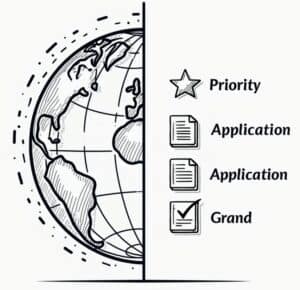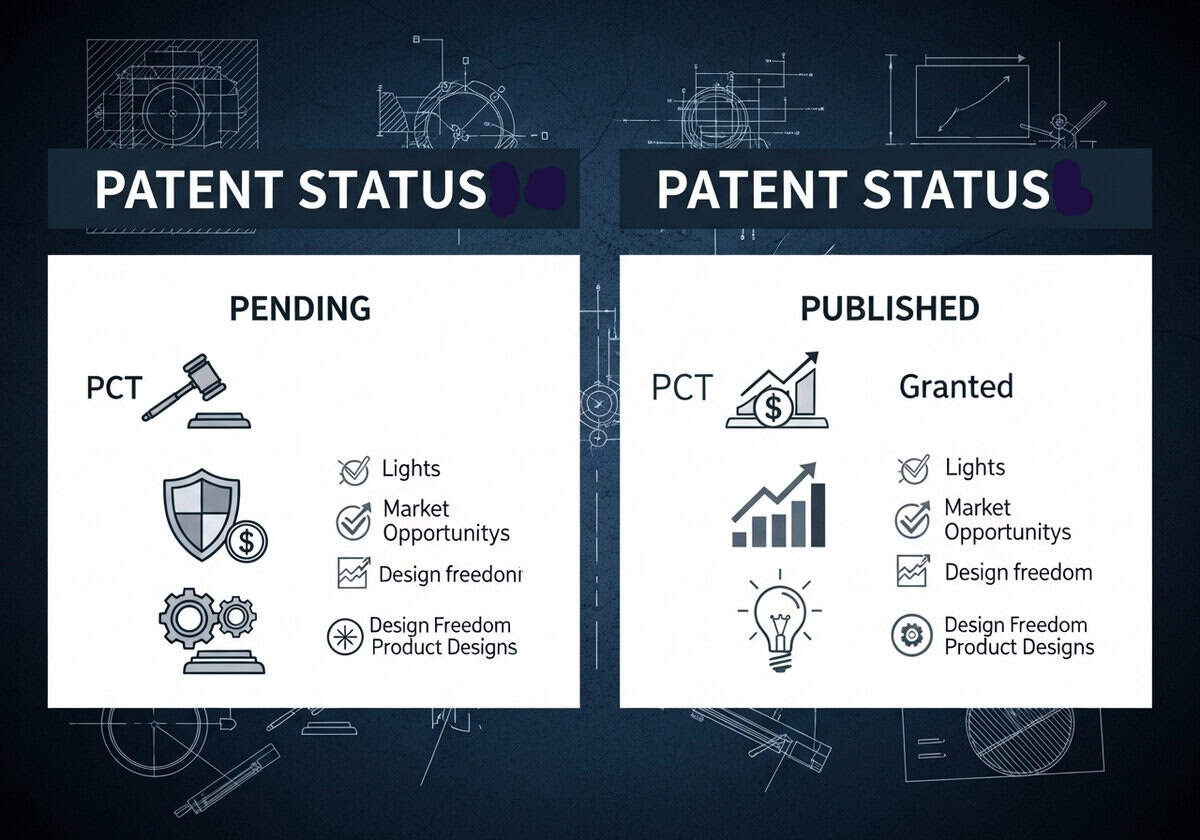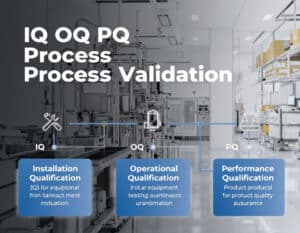For an engineer or product designer, understanding the specific براءة اختراع status provides direct insight into design freedom and competitive intelligence. A patent’s current stage dictates the level of legal risk, what can be publicly disclosed, and how to position a new product. Mistaking a published application for a granted patent could lead to building a product that will infringe, resulting in costly redesigns or litigation. Conversely, recognizing that a competitor’s patent is only at the PCT application stage reveals a long timeline before any enforceable rights exist, creating a window of opportunity for market entry or the development of alternative, non-infringing solutions. This knowledge transforms intellectual property from a legal abstraction into a practical guide for technical and strategic decision-making.
Each patent status carries a distinct set of possibilities and limitations described in detail below. The “patent pending” status, for example, allows a company to market an invention and deter copycats while the application is still under review. A “granted patent” shifts the focus to enforcement and marking products with the patent number to secure full damages against infringers.
النقاط الرئيسية

- PCT application enables global patent filing strategy.
- Published applications provide early disclosure for prior art.
- A granted patent confers legal rights for enforcement.
- Understand differences in legal patent status and protection scope.
- Follow systematic process from priority to grant efficiently.
The PCT Application as an International Pathway
A Patent Cooperation Treaty (PCT) application serves as an international mechanism for patenting inventions across multiple jurisdictions.

This pathway allows inventors to secure their intellectual property rights in several countries through a single application, which simplifies the initial steps in protecting innovations globally. By filing a PCT application, applicants effectively postpone the high costs associated with filing in individual countries while retaining the option to pursue patents later on in different markets. The PCT has been adopted by 155 contracting states, which increases its importance as a strategic tool for international business and trade.
The PCT application process bifurcates into two main phases: the international phase and the national phase. During the international phase, applicants receive an International Search Report (ISR) that outlines potential prior art. This process enables inventors to evaluate the viability of their inventions before incurring additional expenses in foreign patent offices. Once the ISR is received, applicants can decide in which member states to pursue their patent rights, allowing for strategic market entry decisions.
An important aspect of the PCT system is also its unifying feature, which aggregates data and promotes information sharing among member states, leading to enhanced opportunities for technology licensing.
The early international filing date provided by the PCT is advantageous because it establishes priority, allowing inventors to claim their invention dates before later filings in national jurisdictions.
The traditional approach: consider filing a PCT application if you anticipate wanting patent rights in multiple countries, as it maximizes your options and provides essential time to assess commercial viability before committing to national filings.
نصيحة الخبراء: strategically use the Chapter II demand for International Preliminary Examination to obtain a positive patentability report before entering the national phase.
Many applicants file a PCT application, receive the initial search report and written opinion, and then simply wait for the 30-month deadline to enter the national phase. An expert approach, however, treats the international phase as a dry run for actual examination. If the initial written opinion raises objections, instead of waiting to fight the same battle in ten different countries, you can file a “Chapter II demand.” This allows you to submit arguments and claim amendments directly within the PCT system under Article 34. The goal is to resolve the examiner’s objections and persuade them to issue a positive International Preliminary Report on Patentability (IPRP). A favorable IPRP is a powerful tool; it can be used to accelerate examination and increase the likelihood of allowance in many national offices through the Patent Prosecution Highway (PPH) program, saving immense time and money by solving the core patentability issues once, at a centralized level.
(refer to the big comparison table below for all the PCT, براءة اختراع معلقة, published patent and granted patent comparison)
The Pending Patent Status
A pending patent is a patent application that has been formally filed with a national or regional patent office and is awaiting a final decision. During this period, the application is under review by a patent examiner who determines if the invention meets the legal standards for patentability, such as novelty and non-obviousness.
This examination phase involves a formal dialogue between the applicant and the examiner, where issues are addressed through office actions and responses.
The entire period from the initial filing until the application is either granted or abandoned is known as the pending state.
The primary effect of this patent status is that it allows the applicant to mark products with the notice “patent pending.” This designation warns competitors that an application for the invention exists and that exclusive rights may be granted in the future. A pending patent provides no immediate right to stop others from making or selling the invention; it is not an enforceable legal instrument. However, once the application is published, it may establish provisional rights, which can allow the owner to seek damages for infringing activities that took place during the pending period, but only after the patent is officially granted. The claims defining the invention’s scope are also subject to change throughout this examination period.
نصيحة الخبراء: strategically use continuation applications to keep your invention’s subject matter in a pending state, even after an initial patent is granted.
Before you pay the issue fee for an allowed application, file a continuation application. This new application inherits the priority date of the original but remains pending and open for examination. This creates a powerful strategic advantage: it can allow you to pursue a different set of claims if a competitor launches a product that tries to design around your first patent’s claims. You can draft new claims in the continuation, supported by your original disclosure, that are specifically designed to cover that competitor’s product. This tactic transforms a static patent into a dynamic offensive tool, creating a “picket fence” of protection around your core technology and making it significantly harder for others to operate in your space.
(refer to the big comparison table below for all the PCT, pending patent, published patent and granted patent comparison)
Definition of Published Patent Application and Its Role in Prior Art
A published patent application refers to a patent application that...
You have read 26% of the article. The rest is for our community. Already a member? تسجيل الدخول
(وأيضًا لحماية المحتوى الأصلي لدينا من روبوتات الكشط)
مجتمع الابتكار العالمي
تسجيل الدخول أو التسجيل (100% مجاناً)
اطلع على بقية هذه المقالة وجميع المحتويات والأدوات الخاصة بالأعضاء فقط.
فقط المهندسون والمصنعون والمصممون والمسوقون الحقيقيون المحترفون.
لا روبوت، ولا كاره، ولا مرسل رسائل غير مرغوب فيها.
الأسئلة الشائعة
ما هو طلب PCT؟
ما هو طلب براءة الاختراع المنشور وما هو الدور الذي يلعبه في الفن السابق؟
ما الذي يشكل حالة براءة الاختراع الممنوحة وما هي الحقوق التي تمنحها؟
ما هو التدفق العام للعملية من الأولوية إلى المنحة؟
كيف يؤثر الفن السابق على عملية طلب براءة الاختراع؟
ما هو الدور الذي تلعبه براءة الاختراع الممنوحة في ترخيص التكنولوجيا؟
مواضيع ذات صلة
- المعاهدات الدولية للبراءات: فهم الاتفاقيات التي تسهل حماية براءات الاختراع في العديد من البلدان.
- متطلبات الدخول للمرحلة الوطنية: المعايير اللازمة لدخول المراحل الوطنية في مختلف الولايات القضائية.
- إجراءات فحص براءات الاختراع: نظرة عامة على كيفية فحص البلدان المختلفة لطلبات براءات الاختراع.
- عمليات البحث عن الفن السابق: طرق لتقييم التقنيات الحالية التي قد تؤثر على قابلية الحصول على براءة اختراع.
- رسوم صيانة براءة الاختراع: فهم التكاليف المرتبطة بالحفاظ على صلاحية براءة الاختراع الممنوحة.
- الاعتبارات الجغرافية في براءات الاختراع: العوامل المؤثرة على استراتيجية براءات الاختراع بناءً على مواقع السوق.
- قضايا انتهاك براءات الاختراع: نظرة عامة على العمليات والاعتبارات في نزاعات براءات الاختراع.
- استراتيجيات براءات الاختراع البديلة: استكشاف الخيارات التي تتجاوز براءات الاختراع التقليدية، مثل الأسرار التجارية.
- ممارسات الابتكار المفتوح: النهج التعاوني للابتكار الذي قد ينطوي على تبادل براءات الاختراع.
- اتفاقيات نقل التكنولوجيا: آليات نقل حقوق التكنولوجيا بين الكيانات.
- اتجاهات السوق العالمية في براءات الاختراع: تحليل لكيفية تأثير العوامل الاقتصادية العالمية على طلبات براءات الاختراع.
مسرد المصطلحات المستخدمة أعلاه
Computed Tomography (CT): تقنية تصوير طبي تستخدم الأشعة السينية والمعالجة الحاسوبية لإنشاء صور مقطعية للجسم، مما يتيح تصورًا دقيقًا للهياكل والأنسجة الداخلية. تُعزز هذه التقنية قدرات التشخيص من خلال توفير صور ثلاثية الأبعاد من بيانات ثنائية الأبعاد.
Initial Public Offering (IPO): عملية تقوم من خلالها شركة خاصة بعرض أسهمها على الجمهور لأول مرة، مما يسمح لها بجمع رأس المال من المستثمرين العموميين أثناء تداولها علنًا في بورصة الأوراق المالية.
Public Domain: وضع قانوني يُشير إلى تحرر الأعمال من قيود حقوق النشر، مما يسمح لأي شخص باستخدامها وتعديلها وتوزيعها دون إذن أو مقابل. قد ينشأ هذا الوضع نتيجة انتهاء صلاحية حقوق النشر، أو إهداء صريح من المُبدع، أو عدم أهلية العمل لحقوق النشر.
Unique Selling Point (USP): ميزة أو فائدة مميزة تجعل المنتج أو الخدمة متميزًا عن المنافسين، وتهدف إلى جذب العملاء من خلال معالجة احتياجات أو تفضيلات محددة.
United States Patent & Trademark Office (USPTO): federal agency responsible for granting patents and registering trademarks in the United States, promoting ابتكار and protecting intellectual property rights. It examines applications, issues patents, and maintains a database of registered trademarks.
Work in Progress (WIP): العناصر التي تُنجز جزئيًا في عملية الإنتاج، بما في ذلك المواد الخام والعمالة والتكاليف العامة المتكبدة حتى نقطة معينة. هذه الأصول ليست منتجات جاهزة بعد، وهي ضرورية لتتبع كفاءة الإنتاج وإدارة المخزون.
You have read 26% of the article. The rest is for our community. Already a member? تسجيل الدخول
(وأيضًا لحماية المحتوى الأصلي لدينا من روبوتات الكشط)
مجتمع الابتكار العالمي
تسجيل الدخول أو التسجيل (100% مجاناً)
اطلع على بقية هذه المقالة وجميع المحتويات والأدوات الخاصة بالأعضاء فقط.
فقط المهندسون والمصنعون والمصممون والمسوقون الحقيقيون المحترفون.
لا روبوت، ولا كاره، ولا مرسل رسائل غير مرغوب فيها.











منشورات ذات صلة
استراتيجية مكافحة التلوث والغرف النظيفة: 26 أفضل الممارسات
من GMP إلى cGMP: دليل الإتقان الكامل
التحقق من صحة عملية IQ OQ PQ: النظرية الكاملة والتطبيق العملي
استراتيجيات "الجوز الوحيد"، و"التابع الأول"، و"التابع السريع"
أفضل 20 استخدامًا للوكلاء في الهندسة
كيفية بيع الثلج للإسكيمو (أو بالأحرى حيل التسويق)